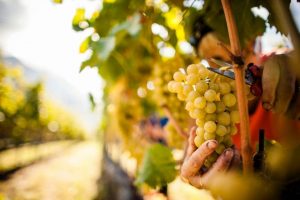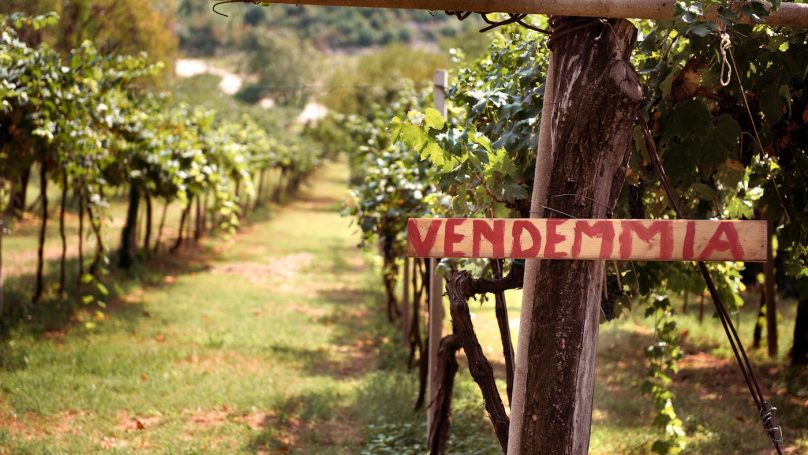Curiosity
The harvest

With the arrival of September we officially entered the grape harvesting period. Let’s find out about this practice together.
The Harvest is the term used to refer to the process of harvesting the grapes destined for winemaking. The right time for harvesting is when the grape reaches the right degree of ripeness. The “good” periods for the harvest are essentially three: August-September, September-October, and October-November, for late-ripening grapes.
Analysis and collection
The first phase consists in gathering the bunches. Preceded by a careful period of analysis of the bunches directly in the vineyard so that the oenologist technician together with the agronomist can ensure that the grapes are at the exact moment of ripening. Cut with the appropriate tools, and separated from the leaves, the best and healthy bunches. They are placed in plastic boxes that will be emptied in towed trolleys to be transported to the collecting tank at the “slopes” of the cellar. To prevent the grapes from deteriorating often the carts are covered with dry ice so that the bunches remain fresh and the fermentation process due to sugar and heat does not start prematurely.
The crushing
The collected grapes are then transported to the area used and equipped for crushing. First, however, the grapes are conveyed through the augers to the destemmer, the machine that separates the berries from the stalk. This process is fundamental because the stalks, pressed, would yield tannic and amaric substances altering the taste of the bunch. Then separated these elements we proceed to the real pressing that varies depending on the type of berry but also the machine and the technique chosen by the oenologist technician.
Fermentation
The flower must or green must obtained with the crushing is pumped into the tanks called fermenters where the fermentation phase will begin. The latter can be of three different types: fermentation in red, fermentation in white or vinification in rosé.
Racking
Once the fermentation for the Rosso berry wines is over, the process of racking is carried out, ie the separation after fermentation of the skins from the fermented must. It is a very long and demanding process and with a small dose of risk for the cellar operators being the moment when the fermenters are opened, and “handled” by very close.
The final stages of the harvest
After fermentation, perhaps one of the most important phases begins, the aging phase that will give rise to the most different wines. In any case, the result will be the result of traditions handed down from generation to generation, often very secret, to produce a product that is an expression of its territory of origin and competitive in today’s market.
Good day,
Ilde





